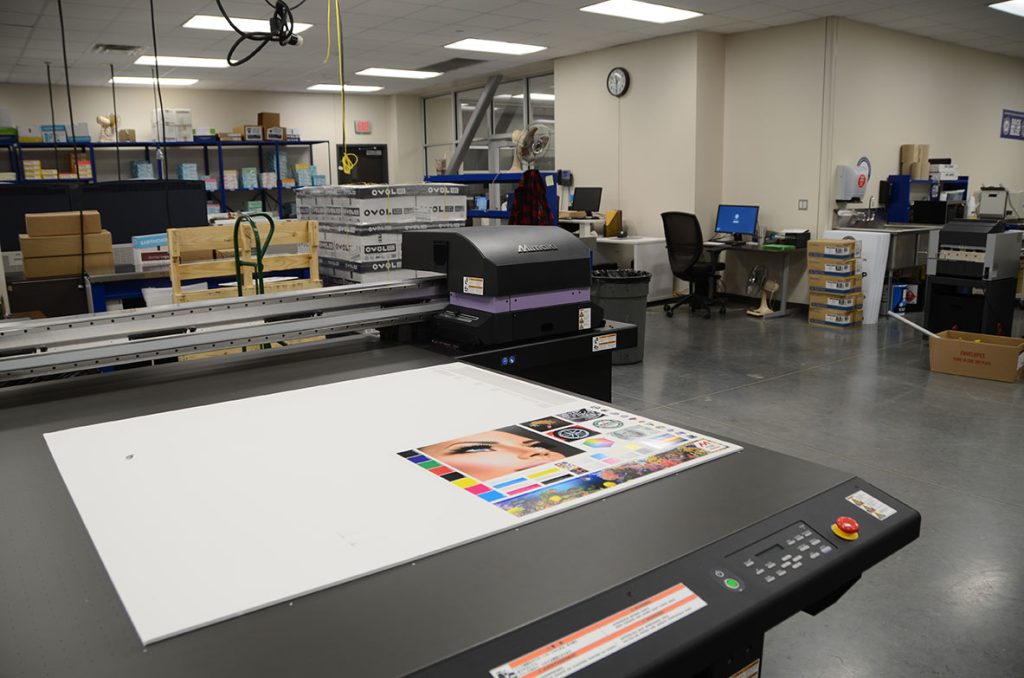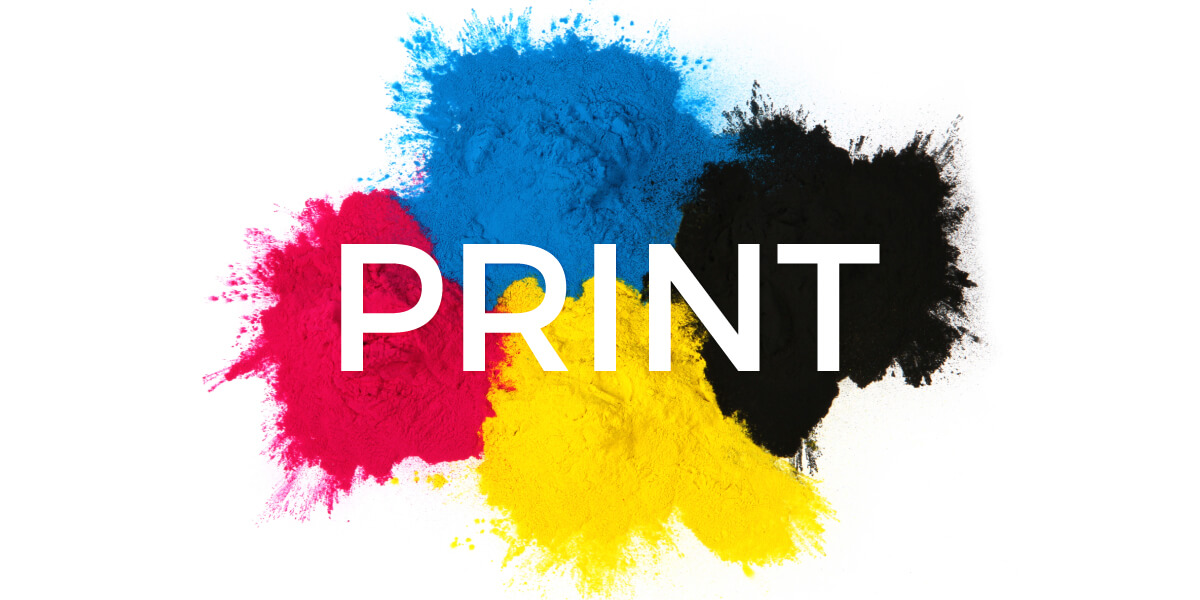Why Every Art Collector Should Know a Print Shop Near Me
Why Every Art Collector Should Know a Print Shop Near Me
Blog Article
The Ultimate Overview to Utilizing Printing Services for Personalized Art Prints
Guiding via the world of custom-made art prints needs a clear understanding of various printing solutions. Musicians have to take into consideration elements such as printing methods and materials to achieve the wanted result. Each choice, from artwork preparation to shade calibration, plays an important duty in the last item. As they discover these aspects, musicians can disclose the possibility for their job to get in touch with audiences in a meaningful means. What steps can they take to guarantee their prints stand apart?
Recognizing Different Types of Printing Services
Several people may ignore the details of printing solutions, recognizing the various types offered is essential for any person looking to produce personalized art prints. One of the most usual kinds include digital printing, offset printing, and display printing. Digital printing is favored for its fast turn-around and capability to generate top notch pictures directly from electronic files, making it suitable for small runs. In contrast, countered printing offers remarkable photo high quality and is affordable for bigger quantities, making use of plates to move ink onto paper. Screen printing, commonly used for textiles and promotional things, involves pushing ink via a mesh screen, enabling dynamic shades and textures. Each approach has its distinct benefits and constraints, making it important for musicians and developers to evaluate their details needs, such as amount, desired high quality, and spending plan, prior to picking a printing service that aligns with their imaginative vision.
Choosing the Right Products for Your Prints
Selecting the appropriate products is essential for attaining premium custom-made art prints. Recognizing the different types of paper and the value of ink quality can significantly affect the last result. Musicians need to take into consideration these variables to assure their vision is properly stood for in the printed item.
Paper Kind Explained
Choosing the ideal paper kind is essential for achieving the desired aesthetic and durability in personalized art prints. Different options exist, each offering distinctive features. As an example, glossy paper enhances color vibrancy and information, making it excellent for photography prints. On the other hand, matte paper offers a softer finish, which is more effective for art work that needs subtlety and appearance. Fine art paper, often made from cotton or alpha cellulose, supplies archival top quality and appropriates for replicating elaborate information in paintings (Print Shop Near Me). Additionally, specialized papers, such as watercolor or canvas, can add unique visual results. Inevitably, choosing the appropriate paper type will greatly affect the last discussion, making sure that the artwork is both long-lasting and visually attractive
Ink Top Quality Matters
Ink quality plays a crucial function in the overall success of customized art prints. Top quality inks assure dynamic shades, sharp details, and durability, which are essential for showcasing creative job. When selecting printing solutions, musicians should take into consideration pigment-based inks over dye-based options, as they provide much better discolor resistance and shade stability. Furthermore, the selection of ink ought to complement the picked paper kind, enhancing the print's visual influence. Ecological factors, such as moisture and temperature, can also affect ink efficiency; as a result, musicians need to ask about ink formulas that resist these components. Eventually, investing in premium ink quality can boost the last item, assuring that the art print holds to the musician's vision for many years ahead.
Discovering Printing Methods: Digital vs. Conventional
While both electronic and conventional printing methods have their distinct benefits, the decision on which method to use typically rests on the certain demands of the art work. Digital printing masters adaptability and speed, permitting fast turn-around times and the capacity to publish as needed. This approach is particularly advantageous for musicians who require special pieces or tiny runs, as it removes the demand for comprehensive setup processes.Conversely, standard printing methods, such as lithography and screen printing, commonly produce richer textures and shades, interesting musicians seeking a more responsive and authentic finish. These approaches can enhance the deepness and quality of the artwork, making them appropriate for larger versions. In addition, traditional techniques may use an unique aesthetic that digital printing often battles to reproduce. Eventually, the choice in between these strategies must think about factors like desired high quality, quantity, and artistic intent, leading musicians to the most ideal choice for their tasks.

Preparing Your Art Work for Printing
Successfully preparing artwork for printing requires cautious interest to information, no matter of the chosen printing method. Musicians should assure that their data are developed at the proper resolution, commonly 300 DPI, to keep intensity and clarity. The proper shade setting, generally CMYK for print, is vital to accomplish the preferred shade precision. Musicians need to additionally think about the dimensions of the art work, ensuring to consist of bleed areas if required, to avoid any unwanted white edges after trimming.Additionally, file styles play an essential function; TIFF and PDF are typically preferred for high-grade prints. Prior to submission, it is essential to review the artwork for any kind of blemishes or undesirable elements. By diligently examining these elements, musicians can boost the possibility of their prints lining up with their innovative sites vision, ultimately leading to a successful printing outcome.
The Significance of Color Calibration and Proofing
Shade calibration and proofing are vital actions in the printing procedure, as they ensure that the last result properly mirrors the musician's vision. Correct shade calibration guarantees that the shades showed on the screen match those that will certainly be published. This process includes readjusting the screen setups, printer accounts, and inks to attain a constant color representation.Additionally, proofing allows artists to sneak peek their job before the final print browse around this web-site run. This stage enables them to spot and correct any discrepancies in shade, saturation, or detail, thus lessening costly errors. By utilizing hard-copy or electronic evidence, musicians can make informed decisions about modifications required for excellent results.Incorporating color calibration and proofing into the printing process not just boosts the top quality of the end product but additionally fosters a trustworthy collaboration in between the musician and the printing solution, ensuring fulfillment and fidelity to the initial art work.
Selecting the Perfect Size and Format for Your Prints

Marketing and Selling Your Custom Art Prints
Marketing and selling customized art prints needs read the full info here a solid brand identity to stand apart in an open market. Reliable online promotion methods and the strategic usage of social media sites platforms can significantly enhance exposure and engagement. By incorporating these aspects, artists can produce a compelling existence that draws in prospective customers.
Building Your Brand Identification
Establishing a strong brand identity is vital for artists seeking to effectively market and sell their customized art prints. This identification incorporates the artist's unique design, values, and story, which resonate with possible buyers. Artists need to develop a cohesive visual presence throughout all systems, consisting of logos, color pattern, and typography that mirror their creative vision. Additionally, a clear mission declaration helps connect the musician's function and interest. Engaging narration concerning the inspiration behind each item can promote psychological links with the target market. Uniformity in messaging, whether on social networks or product packaging, improves acknowledgment and trust. By thoroughly curating their brand name identification, artists can differentiate themselves in an open market, drawing in faithful customers who appreciate their virtuosity.
Reliable Online Promo Techniques
What strategies can artists employ to effectively advertise their custom-made art publishes online? First, developing an expert website showcasing the artwork is important. This website should consist of premium photos and comprehensive descriptions to engage prospective buyers. In addition, musicians can make use of e-mail advertising by constructing a client listing to share updates, promos, and new launches. Collaborating with bloggers and influencers in the art area can broaden reach and reliability. Providing unique items or limited-time discount rates can additionally produce seriousness, motivating purchases. In addition, optimizing web content for search engines through pertinent keyword phrases will enhance presence. Lastly, keeping a blog about the imaginative process can attract art fanatics, fostering a much deeper connection with the target market and boosting the general advertising technique.
Making Use Of Social Media Site Platforms
Social media site systems work as effective devices for artists wanting to market and sell their custom-made art prints. By leveraging systems like Instagram, Facebook, and Pinterest, artists can showcase their job to a huge target market. Engaging visuals and critical hashtags can increase exposure, drawing possible buyers to their profiles. Regularly uploading material, such as new designs or behind the curtain procedures, assists maintain audience rate of interest and cultivates a sense of neighborhood. Additionally, artists can utilize targeted advertising and marketing to reach details demographics, enhancing the chances of sales. Partnerships with influencers or other musicians can further enhance direct exposure. Eventually, a well-curated social media presence not only advertises customized art prints however additionally builds a loyal consumer base with time.
Regularly Asked Questions

How Do I Locate Dependable Printing Company?
To locate reputable printing provider, one should look into on-line reviews, seek referrals from peers, contrast profiles, request samples, and assess client service responsiveness. This detailed method assurances educated choices and satisfactory end results.
What Is the Common Turnaround Time for Custom Prints?
The common turnaround time for personalized prints differs by service provider, but normally varies from a few days to 2 weeks. Factors influencing this consist of order dimension, complexity, and the details printing methods made use of.
Can I Get a Refund if I'm Not Completely satisfied With My Prints?
The question of acquiring a reimbursement for poor prints typically relies on the certain printing solution's plans. Many companies offer complete satisfaction assurances, while others might have stringent return problems, emphasizing the value of reviewing terms beforehand.
Are There Any Hidden Expenses Associated With Printing Services?
Lots of printing solutions might include hidden expenses such as configuration charges, delivery costs, or surcharges for certain materials. It's vital for customers to ask about all possible costs before finalizing their order.
How Can I Ensure My Prints Are Eco-friendly?
To ensure prints are eco-friendly, one must choose environment-friendly inks, recycled paper, and sustainable printing practices. Researching printing solutions that prioritize sustainability and getting qualifications can additionally guarantee minimal environmental influence in the printing process. Guiding through the globe of personalized art prints needs a clear understanding of different printing solutions. Many people might neglect the intricacies of printing services, comprehending the numerous kinds available is essential for any person looking to develop custom-made art prints. The most common kinds include electronic printing, balance out printing, and display printing. Effectively preparing art work for printing calls for mindful attention to information, regardless of the chosen printing technique. Prints aimed at galleries may need standard dimensions to assist in framework, whereas one-of-a-kind formats may appeal to enthusiasts looking for something distinctive.Lastly, the printing service's capacities have to be evaluated.
Report this page